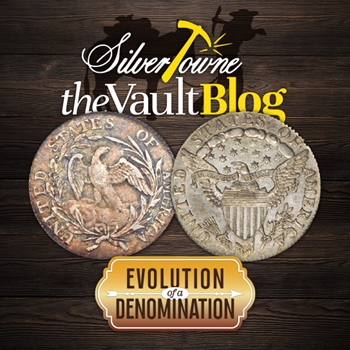
While the ten-cent piece, or most commonly known as the dime, is a staple in today’s circulating United States coinage, it was actually one of the last coins to be produced when official minting operations began way back in 1792. However, once the minting of the denomination began, it held its own among many that are no longer with us.
The dime was not produced in an official capacity until a few years after The Coinage Act of 1792 was passed, but it was always part of the proposed decimal system argued by the likes of Thomas Jefferson, Ben Franklin, Alexander Hamilton, and eventual first Director of the United States Mint, David Rittenhouse. In the provision, a silver dollar and a coin one-tenth of would be included. This is where the term disme came into play. However, in 1792 before official mint coins were produced, around 1,500 half dismes and a small amount of dismes were struck as authorized issues. Today they are known as patterns in the numismatic field as only around three dismes from the first year are known to exist.
Draped Bust, Small Eagle (1796-1797)
It would be four years after the first pattern coins were struck that actual ten-cent denomination coins would be produced for circulation. The Draped Bust, Small Eagle design from first Chief Engraver of the Mint, Robert Scot, features Lady Liberty on the obverse. Her hair flowing down her back is tied with a ribbon and her bust/neckline is covered with drapery. Featured around her are 15 stars with the inscription “LIBERTY” at the top and the date below her. The reverse of the design features a small eagle with its wings spread and perched on clouds. It is surrounded by the motto “UNITED STATES OF AMERICA” and olive branches.
While 1796-dated coins feature 15 stars on the obverse, some of the coins dated in 1797 were produced with 16 stars including Tennessee and others stuck with 13 stars representing the original 13 colonies. Dies created to include extra stars on the design were eventually discontinued. Just 47,396 pieces were minted with the Small Eagle reverse and three varieties exist in the series (15 stars, 16 stars, 13 stars). All were minted at the Philadelphia Mint.
Draped Bust, Heraldic Eagle Reverse (1798-1807)
For the time, the design of the official first dimes were liked and well suited for United States coinage. But the reverse seemed to be a problem for many. The eagle was considered scrawny and critics made note of it. In 1798, Scot would replace the small eagle on the reverse with a scaled down version of the heraldic eagle with the Union Shield on its breast that can be seen on the Great Seal of the United States. The eagle would also be holding a ribbon with the words “E PLURIBUS UNUM” in its beak.
With all coins produced at Philadelphia, around 422,010 pieces were struck in this series with the dates 1799 and 1806 being excluded. The most common dated coins that can be found are from the last two years, 1805 and 1807.
Source: NGCCoin.com







